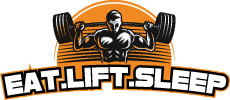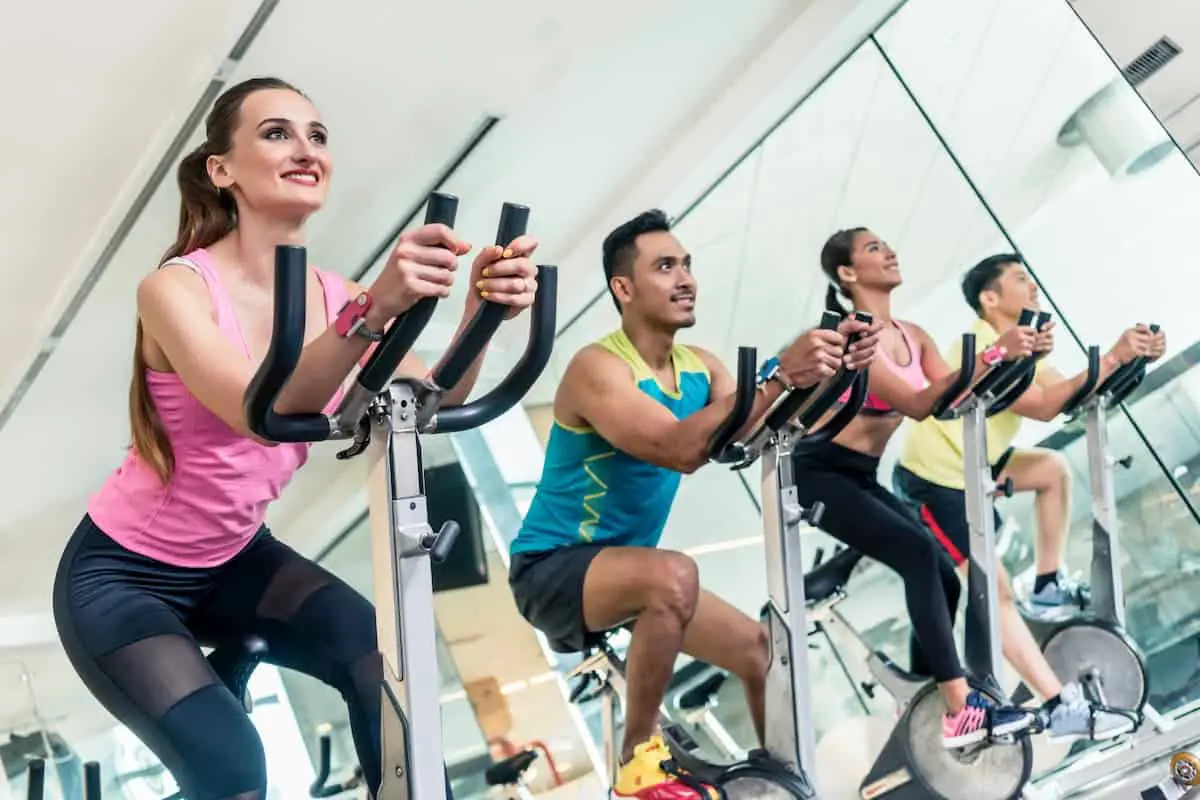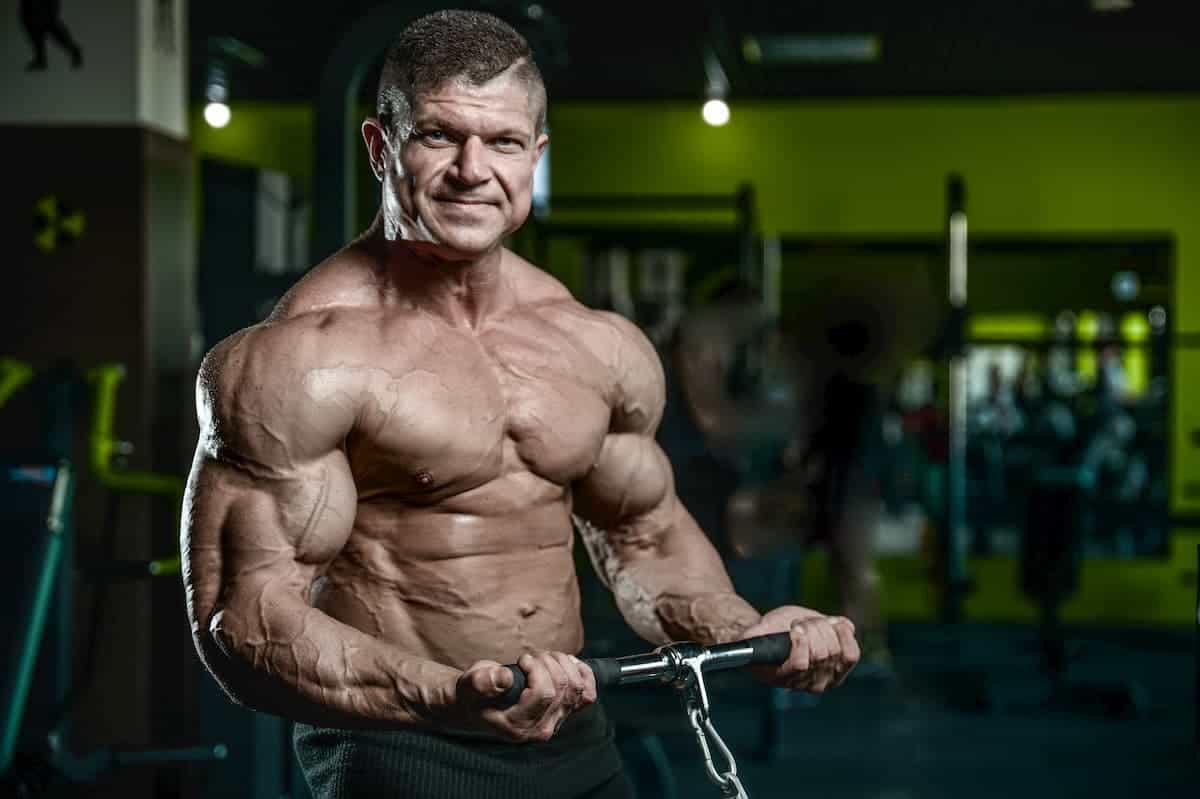Working out can be a daunting task to get into, but it doesn’t have to feel like lifting weights is pulling teeth. Grouping exercises together and working multiple muscles at once can make the process much more efficient and rewarding.
The best way to maximize the effectiveness of your workout routine is by understanding which muscle groups should be targeted together while training – after all, synergy leads to great results! Which muscles work well together? What’s the optimal combination that will give you noticeable gains?
In this blog post, we’ll help break down what some of these combinations are for those who want to see fast and lasting results from their workout sessions.
So grab a sweat towel & let’s get started with finding out which muscled pairings will bring you success in no time!
Chest & Back
Working chest and back together is a great way to maximize your time in the gym and get the most out of your workout. Combining these two muscle groups helps engage more muscles at once, allowing you to build strength more quickly.
When it comes to chest exercises, there are plenty of options that will help you target all areas of the chest.
For example, bench presses work both the lower and upper chest while push ups hit more of the middle area. Some other good options include flys, cable crossovers, dips and incline/decline presses.
For back exercises, some good choices are pull-ups/chin-ups (both wide grip or close grip), rows (barbell or dumbbell), lat pull downs as well as deadlifts.
It’s important to make sure you’re doing an equal amount of pushing and pulling exercises so that your body remains balanced.
By combining these two muscle groups into one workout session you can save time by cutting down on rest periods between sets since different muscles are being used for each set – thus helping increase overall muscular endurance as well!
Chest Exercises
Working out your chest and back together is an effective way to build strength and help you reach your fitness goals.
When it comes to chest exercises, there are many different options available depending on the equipment you have access to.
Some of the most popular choices include push-ups, barbell presses, dumbbell bench presses, dips, cable flies, and more.
The best thing about these exercises is that they don’t require any special machines or equipment; all you need is a flat surface such as a bench or floor.
For back exercises, bent-over rows are one of the most effective ways to target those muscles. You can do this exercise with either free weights or a machine if you have access to one.
Pull-ups are also great for targeting the back muscles while also engaging other body parts like biceps and forearms. Lat pulldowns using cables are another great option for working your lower lats in particular.
Finally, deadlifts not only work your back but also engage multiple muscle groups including hamstrings and glutes – making them an incredibly effective workout for total body development!
Back Exercises
Working out your back is important for overall body strength and posture, as it helps to support the spine on which everything else hangs.
To get the most benefit from your back workout, I recommend incorporating a combination of compound exercises and isolation exercises into your routine.
Compound exercises are multi-joint movements that involve more than one muscle group at a time, like bent-over rows and pull ups.
These exercises will help you build strength in multiple muscles all at once and can be great for increasing overall muscle mass.
Isolation exercises are single-joint moves that target specific muscles, such as lat pulldowns or bicep curls. Isolating individual muscles allows you to work on parts of the back you want to develop further or correct any imbalances if needed.
It’s important to keep in mind proper form when performing these types of exercises so as not to injure yourself!
When trying out new back workouts, start with lighter weights until you feel comfortable with each exercise before increasing weight levels slowly over time based on your comfort level.
Remember to also always stretch before (and after) each workout session – it will help reduce risk of injury while keeping your body limber and ready for action!
Shoulders & Biceps
Working out your shoulders and biceps together is a great way to improve strength, coordination, and muscle tone.
When done correctly, this workout can help you build balanced muscles that not only look great but also perform better.
The key to success with any exercise routine is good form. Here are some tips for getting the most out of shoulder and bicep exercises:
- Keep your back straight – This will ensure that you’re using the right muscles during each exercise.
- Control the weight – Don’t swing or jerk the weights; use slow, controlled movements for best results.
- Use full range of motion – Make sure to move through a full range of motion with each rep in order for the exerciseto be effective.
- Take breaks as needed – If you feel fatigued or have trouble maintaining good form, take a break untilyou’re ready to continue.
For shoulder exercises, consider doing overhead presses, lateral raises, front raises and/or bent over rows.
For bicep exercises try doing curls (standing or seated), hammer curls and/or reverse curls with dumbbells or resistance bands.
Make sure to choose weights that challenge you but still allow for good form throughout your reps!
Shoulder Exercises
Working out your shoulders is essential for overall strength and stability, as they are used in nearly every upper body exercise. But it can be difficult to know which exercises are best for targeting the shoulders.
Luckily, there are a few tried-and-true shoulder exercises that will help you build strong and healthy muscles:
- Dumbbell Shoulder Press: This exercise works both your front and back deltoids simultaneously. Hold two dumbbells at shoulder height with your palms facing forward and press upwards until your arms reach full extension overhead. Keep your chest up throughout the movement – this helps target the correct muscles!
- Lateral Raises: This exercise targets both the medial and lateral head of the deltoid muscle group. Stand with feet hip width apart, hold two dumbbells in each hand at waist level, then lift them outwards to bring them just above shoulder height before slowly lowering them back down again.
- Reverse Flyes: Reverse flyes work all three heads of the deltoids muscle group – anterior, medial & posterior by using an outward rowing motion instead of a pressing action like other standard presses do. To perform reverse flyes stand upright with bent knees and slightly hinged forward from hips while holding a light weight in each hand (dumbbell or resistance band). Pull hands outward away from hips so elbows reach shoulder level before releasing back down again to starting position in one controlled fluid motion without locking out elbows at any point during range of motion.
- Front Raises: This exercise specifically targets the anterior (or front) part of your delts that’s responsible for moving arms forwards, backwards, away from body or towards it when lifting something heavy up above head or bringing objects closer towards you such as when carrying groceries indoors etc.. To perform front raises simply stand upright with feet hip width apart while holding one light weight per hand (dumbbell or resistance band). Raise arms straight outwards from body until they reach just above shoulder height before slowly lower back down again to starting position without locking elbows at any point during range of motions control form each end repitition being careful not bend torso over too far during lifts otherwise incorrect muscles are worked rather than intended ones specifically targeting desired parts further isolating individual sides much more effectively than if done wrong resulting weaker results due improper posture & technique employed throughout reps sets completed thus decreasing effectiveness whole workout routine consisting multiple types
Bicep Exercises
Working your biceps is one of the most essential parts of a successful workout regime and helps build strength and definition in your arms. When it comes to exercises that target the biceps, some of the best ones are barbell curls, hammer curls, EZ-bar curls, cable curls, and concentration curls.
Barbell Curls involve lifting a straight barbell using an underhand grip from shoulder width apart up to your chest level. Hammer Curls involve holding two dumbbells with palms facing each other and curling them up simultaneously towards your chest.
EZ-bar Curls require you to lift an EZ-bar (which is slightly curved) with an overhand grip until it reaches chest height. Cable Curls involve standing between two pulleys attached to weight stacks at a gym machine while gripping the bar at either end and curling it up towards your chest.
Lastly, Concentration Curls require you to sit on a bench or chair with one arm hanging off its edge while holding onto a single dumbbell with that hand palm facing inwards before bringing it up as far as possible toward your shoulder.
These five exercises provide great alternatives for targeting different sections of the muscle when used together in combination for maximum results!
Quads & Hamstrings
Working your quads and hamstrings together is a great way to get the most out of your leg workout. When done correctly, this pairing can strengthen the entire lower body, while also improving overall posture.
The quadriceps are made up of four muscles that run along the front of the thigh from your hip to knee joint. These muscles are responsible for knee extension, helping you bend and straighten your leg when walking or running.
When it comes to exercises targeting these muscles, squats or lunges can be effective at strengthening them without any additional equipment.
On the other hand, the hamstring is composed of three muscles on the backside of each thigh that extend from hip to knee joint as well. They work in direct opposition with our quadriceps and are mainly used for bending/flexing our knees.Exercises like glute bridge raises or Romanian deadlifts are great options for targeting this muscle group effectively with minimal equipment needed.
By combining both quad-targeting and hamstring-targeting exercises into one workout session, you’ll be able to maximize efficiency while also creating a balance between both sets of muscle groups in your legs!
Plus incorporate core exercises like planks into this routine as well if you want an extra challenge!
Quad Exercises
Working out the quad muscles is a great way to improve overall physical performance and stability. A few of the best exercises for targeting your quads are squats, lunges, leg presses, and step-ups.
Squats are an excellent exercise for building strength in both your quads and glutes. Be sure to keep your back straight while performing a squat and avoid arching it. You can also add variations such as sumo squats or jumping squats to challenge yourself further.
Lunges are great for working each leg individually, allowing you to focus on improving balance as well as muscle strength. Make sure you take wide steps when lunging so that you can target the quads properly. As with squats, add variations like a lateral lunge or curtsy lunge if desired.
Leg Presses are another great way to work the quad muscles without putting too much stress on other parts of the body such as your back or knees.
They allow you to control how much weight is being used, making them ideal for beginners who may not be able to handle too much weight yet.
Finally, Step-Ups are perfect for training one leg at a time since they involve stepping onto something high (like a ledge or platform) then stepping down again with just one foot at a time.
This makes them perfect for increasing lower body stability and strength while minimizing risk of injury due to uneven loading of weight on both legs simultaneously.
Hamstring Exercises
Working out your hamstrings is essential to maintain balance and stability. Doing so will not only help you build a strong lower body, but also prevent injuries.
The key exercises for working on your hamstrings are:
- Deadlifts: perform deadlifts with proper form. This exercise targets the whole posterior chain (including glutes) while improving core strength, hip flexion, and hamstring flexibility.
- Single-Leg Romanian Deadlift: hone in on your target muscle group by performing this single leg variation of the movement that helps with overall balance and coordination as well as improving hamstring mobility.
- Glute Bridge: building up your glutes and hamstrings is important for overall lower body strength; this exercise does just that – it focuses mainly on the glutes but also works the hamstrings at the same time!
- Lying Leg Curls: great for isolating quadriceps muscles without loading up too much weight which can be tough on hamstrings; it’s an effective way to build stronger legs over time without putting strain on them during heavier sets of reps.
By incorporating these four exercises into your workout routine, you can get effective results when targeting both quads and hamstrings together!
Core & Glutes
The core and glutes are two of the most important muscle groups in your body. Not only do they help you to get better posture, but strengthening them can also lead to improved balance, stability, coordination, and athleticism.
When it comes to core exercises, there are a few moves that should be staples in your routine:
- Plank: This is the classic core exercise that targets all of the major muscles from your upper abs down to your lower back and obliques.
- Russian Twist: This full-body rotation move will give you strong abdominals while engaging other important muscle groups like hip flexors and glutes.
- Mountain Climbers: This dynamic exercise provides an intense workout for both your core and legs that will leave you feeling energized after each set.
For glute exercises, focus on movements that target several different parts of your butt muscles at once:
- Squats: The king of leg day exercises doesn’t just work your quads – squats engage multiple muscle groups including the hamstrings, calves, hips and glutes.
- Lunges: Single leg lunges target each side of the hips separately for balanced strength development across both sides of the body.
- Glute Bridges/Hip Thrusts: These are great for sculpting strong booty muscles as well as providing some extra stability during heavy lifting sessions due to their focus on posterior chain activation.
When pairing these two muscle groups together in one workout session, don’t forget about warm ups before getting into heavier lifts!
Start by doing a few rounds with light weights or bodyweight-only exercises such as crunches or air squats before increasing reps or adding resistance through weights or bands.
With proper form and adequate rest between sets this combination can provide excellent results!
Core Exercises
When it comes to building a strong core, there are a few muscles that you should focus on strengthening.
Working out your chest and back together can be great for improving posture, balance, and stability.
Here are some of the best core exercises to target these muscles:
- Plank: This is one of the most popular core exercises since it works both your upper and lower body at the same time. You can do a standard plank or add variations like side planks or medicine ball planks.
- Pushups: Pushups work the pecs, triceps, shoulders and even engage your abs as well! Try incline pushups for an extra challenge if regular pushups become too easy. For added stability you can use a pushup bar or perform plyo push ups where you jump off from each rep instead of just lowering yourself down without momentum.
- Pull Ups/Chin Ups: These upper body compound movements will really help with getting stronger in other lifts as they hit several muscle groups at once including your lats, biceps and even your core when done correctly! If regular pull ups are too hard then try assisted pull ups with bands or weighted negatives (where you jump up to the top position then slowly lower yourself down).
- Bird Dog: This exercise strengthens both your stabilizer muscles in addition to targeting all four major abdominal muscles in one go! Start by getting into an all fours position before extending one arm forward while simultaneously extending opposite leg backward until they’re parallel to floor level maintaining flat back throughout movement – hold this position briefly before returning hand and foot back underneath torso again repeating motion alternating sides until desired number reps is achieved.
Glute Exercises
Working your glutes is essential for optimal physical performance and overall health. Glute exercises can help strengthen and build your butt muscles, while also improving posture, balance, and stability.
The best exercises to target your glutes are squats, lunges, hip thrusts, bridges, kickbacks, deadlifts and more.
Squats are an excellent exercise for strengthening the posterior chain – a group of muscles that support the lower body during weight-bearing activities like running or walking.
Lunges focus on the quads but also work the glutes as you raise up out of the lunge position. Hip thrusts involve using a bench or chair to increase the range of motion and focus on building strength in the glutes specifically.
Bridges require you to be lying face-up with feet flat on floor while pressing hips upward towards ceiling; this helps build glute strength as well as core strength in order to maintain proper form throughout the exercise.
Kickbacks are great for targeting specific areas of your butt such as upper region or sides; all you need is one leg extended behind you with the knee slightly bent and then press up against resistance bands/weights until fully extended before lowering back down slowly into starting position (repeat other side).
Finally, deadlifts involve picking up weights from the ground directly below the midline of the body while keeping legs straight so the majority of lifting comes from hamstrings & glutes which makes it a great choice for toning & building strength in those areas!
Conclusion
In conclusion, there are a variety of muscles that can be trained together in an effective workout. Training the chest and back together is beneficial for improving posture and upper body strength.
The shoulders & biceps combo is great for muscle tone and definition as well as building strength in the arms.
Working out your quads & hamstrings will help to build power in your lower body while increasing range of motion.
Finally, engaging your core & glutes helps with balance, stability, and overall fitness level.
It’s important to remember that when combining multiple muscle groups in one workout session you should take into account rest periods between sets to ensure proper recovery time for each muscle group.






Leave a Reply